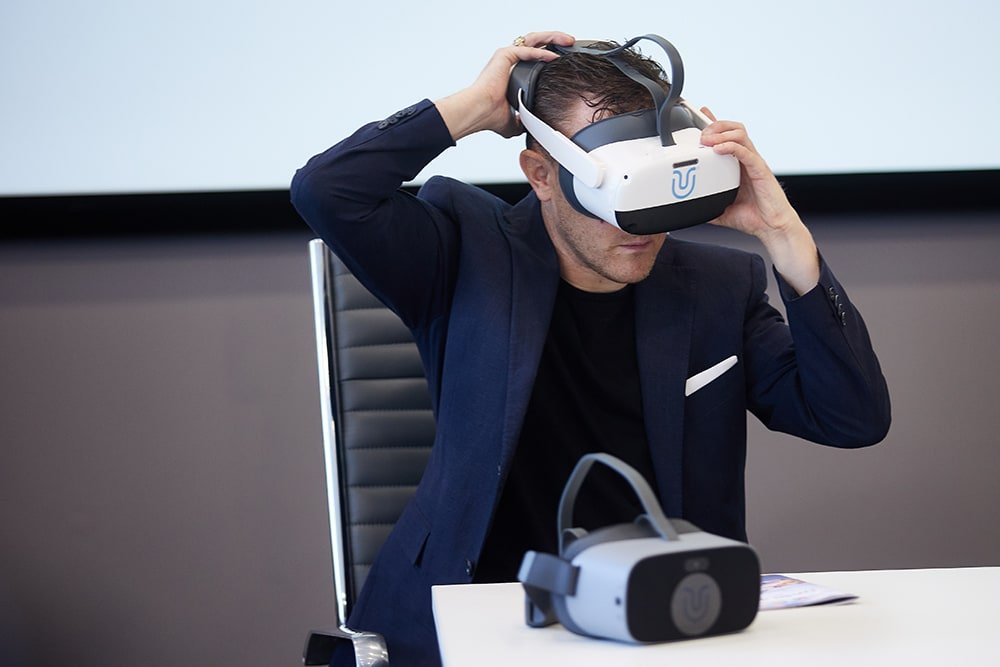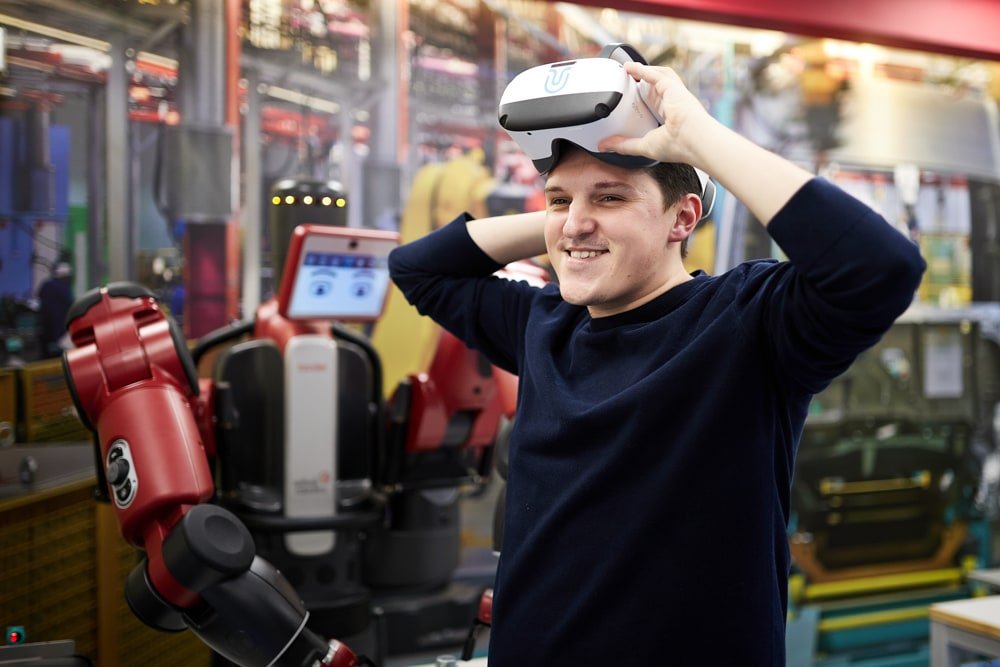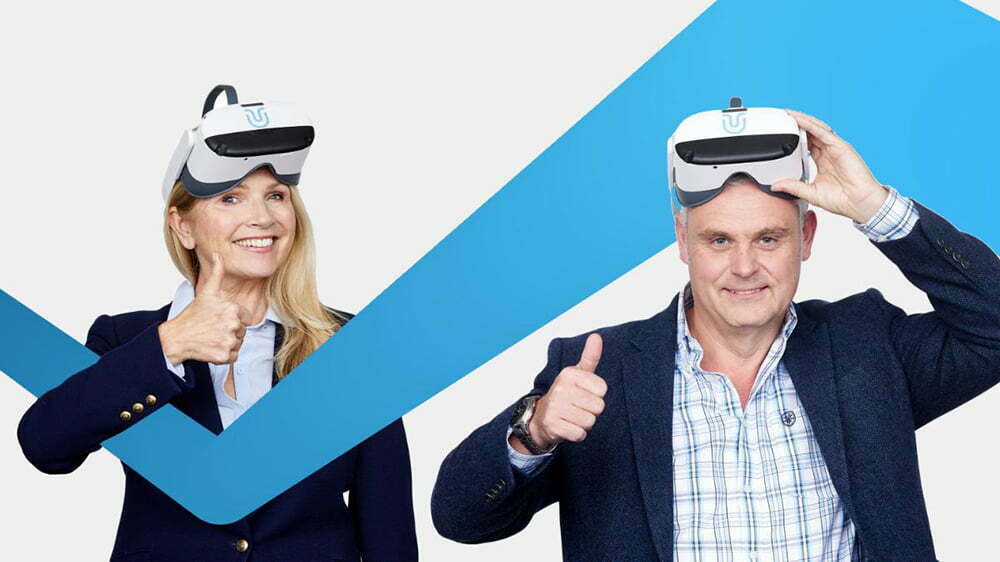Extended Reality in Learning is Happening Now! Here’s Why and How
XR Training is already here, and you won’t want to miss the train or get left behind
12 December 2022
There are plenty of articles and news stories out there discussing the potential the virtual and augmented reality landscape has for training, learning, and general education.
In fact, studies show by 2030, up to 23 million roles worldwide will be using virtual or augmented reality for training, meetings, and customer service, among other use cases.
However, these fail to recognize that learning in VR, AR, as well as mixed and extended reality (MR/XR) isn’t just a concept for the future – it’s already happening now. The industry is already discovering how XR can enhance student learning and engagement, thanks to innovative software, hardware, and platform vendors and the experimental nature of growing brands.
Here’s how XR training is already changing the world and empower any Learning and Development (L&D) processes.
The Why:
The Benefits of XR in Training
VR and AR are powerful tools for enhancing student learning, engagement, and training outcomes. It builds on the concept of experiential learning by placing individuals within authentic scenarios where they can interact with content and connect to the activities they complete on a deeper level.
Being actively immersed in what you’re learning makes understanding complex concepts in any industry easier. With VR and AR, it’s possible to connect with the vast portion of individuals who learn more completely by demonstrating the skills in real-time.

A study by PWC highlights just some of the benefits of VR for training, including,
Greater confidence:
40 percent of VR learners saw a more significant increase in confidence compared to in-classroom students, and 35 percent more VR students improved their confidence to act on the things they learned during their training.
Cost savings:
PWC found VR learning was the most cost-effective way to deliver education on a large scale. With around 3,000 learners to support, VR costs are about 52 percent lower than the costs of having your traditional classroom.
Time savings:
VR learners completed their training four times faster than classroom learners. This might result from the increased focus on VR trainers’ experience. Learners in a VR environment were up to 4 times more focused than their e-learning peers.
Emotional impact:
In PWC’s study, VR learners also felt 3.75 times more emotionally connected to the content with which they interacted. This also led to 75 percent of the learners in an inclusivity course having a ‘wake up’ moment when they realized they weren’t as inclusive as they initially assumed.
The How:
How XR is Already Transforming Training
Countless companies have already begun to invest in XR training programmes, thanks to the rising availability of software, course creation platforms, and hardware. There are endless use cases to explore for almost every industry.
Here are just some examples:

Healthcare:
Immersive healthcare solutions rely on new product innovations to secure quality of care treatments for patients. For example, ARuVR’s platform was commissioned to train medical professionals at the University College of London (UCL) in operating room, surgical, and other procedures. Hosted by Professor Manish Chand, the ground-breaking platform will combine VR and AR to rapidly upskill and improve learner retention for some of the world’s most esteemed medical professionals.
Manufacturing:
Regarding manufacturing processes, ARuVR’s immersive training platform has become instrumental in maintaining quality control, volumes, and reducing equipment downtime. Coca-Cola Bepensa has leveraged the company’s immersive tools to upskill employees, providing critical safety skills, resolving equipment faults, and building interpersonal skills with other colleagues. This has resulted in a 15 percent increase in learner retention, a 100 percent reduction in employee risk exposure, and more than 75 percent increase in training efficacy compared to traditional ‘show and tell’ training models.
Automotive:
In the automotive landscape, XR can help train team members to use design tools and preserve their safety in a complex environment. BMW uses virtual reality to train its team members in design and prototyping. Peugeot, on the other hand, trains its employees in VR to ensure they can operate as safely and efficiently as possible at factories and plants.
Customer service:
Walmart is one of the most mentioned examples of a company using VR to train their employees in customer service. Through VR initiatives, the company allows professionals to practice interacting with customers in different scenarios. This allows for the rapid development of essential soft skills.
Emergency response:
In the emergency services space, virtual reality can help professionals to practice critical skills and boost their safety. In Fort Myers, police officers use VR to help them practice dealing with high-pressure situations. In the City of Austin, emergency responders can practice what to do in the event of an accident, such as assessing the problem and following the necessary protocols to help someone.
Defence:
VR provides people in the defence landscape with a safe way to practice dealing with real-world scenarios which might be dangerous or impossible to replicate. For instance, SimX is working with the US Airforce to develop training systems for special operations, specifically focusing on giving emergency medical attention to people on the field.
Finance:
Bank of America was one of the first companies in the finance industry to launch a virtual reality training model. The solution teaches staff how to open accounts, conduct service calls, and more. AI-generated “mock” customers help to test the employees on dealing with a range of complex situations.
Who is Paving the Way to the Future of XR in Learning?
At the heart of XR in the Learning & Development as well as Education sectors is a series of key players empowering companies and institutions unlocking the next level of training and education.
Platform creators like ARuVR provide businesses with a convenient landscape where they can design VR/AR training environments according to their specific needs without coding expertise or knowledge.

Frank Furnari, Chief Executive Officer and Founder of ARuVR, explained in a statement,
“We [ARuVR] and our partner firms have seen first-hand the benefits to using XR training solutions. Large companies and their employees have benefitted greatly from using our solutions, making the workplace a safer, more efficient, and cost-effective environment to operate in, leading to a better quality of life for everyone involved.”
ARuVR also integrates perfectly with the software developers offering LMS and LXP solutions to companies providing advanced training strategies and the hardware innovators working on making XR more immersive and realistic with in-depth analytics, enhanced visuals, and spatial sound.
The evolving software, hardware, and platforms are rapidly making L&D XR-linked experiences more accessible to all companies from every industry, no matter the size of their workforce.
—
This article first appeared in XR Today, 2nd December 2022